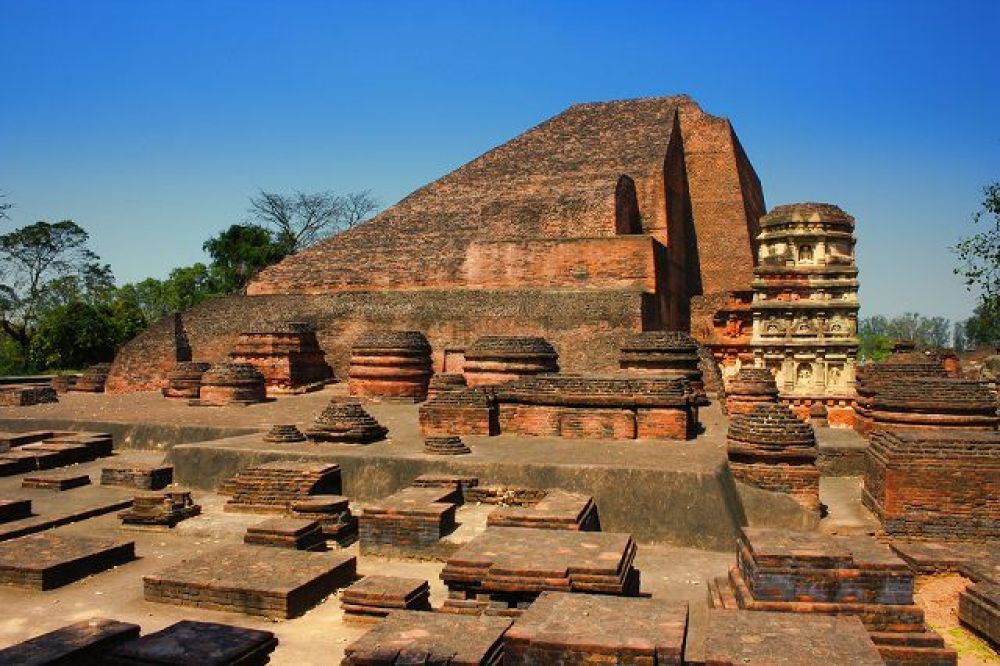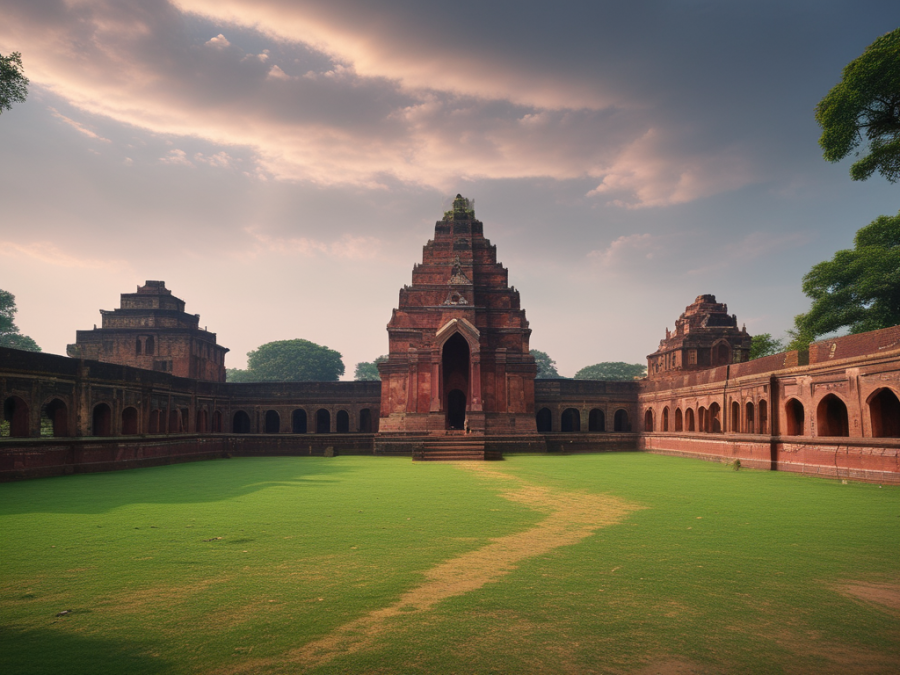Nestled in the heart of Bihar, India, the ruins of Nalanda University whisper tales of an era where knowledge was revered above all. Founded in the 5th century CE during the reign of the Gupta Empire, Nalanda University stands as a testament to the heights of ancient Indian education and intellectual pursuit.
The Birth of a Knowledge Hub
Nalanda was more than just an educational institution; it was a pioneering centre of learning that attracted scholars from across Asia. Established by Kumaragupta I, the university soon became the leading institution of Buddhist studies, though its curriculum spanned a wide array of subjects including philosophy, logic, grammar, medicine, mathematics, and astronomy.
The university’s design was as impressive as its academic offerings. It boasted red brick buildings, vast libraries, lecture halls, dormitories for students, and even meditation halls. The sprawling campus spread over a large area, resembling a self-sufficient academic township. Each detail of Nalanda’s architecture symbolized the emphasis placed on creating a conducive environment for learning and reflection.
An International Melting Pot
Nalanda’s fame transcended borders, drawing students and scholars from as far as China, Korea, Japan, Tibet, Mongolia, Turkey, Sri Lanka, and Southeast Asia. The Chinese scholar Xuanzang, who studied and taught at Nalanda in the 7th century, left behind detailed accounts of the university, providing invaluable insights into its functioning and academic life.
Xuanzang’s writings reveal a rigorous academic atmosphere where over 10,000 students and 2,000 teachers engaged in intellectual debates and discussions. The admission process was highly selective, ensuring that only the most dedicated and brightest minds could enter its hallowed halls. The curriculum was comprehensive, including both sacred Buddhist texts and secular subjects, fostering a holistic approach to education.
The Libraries of Nalanda
One of the most remarkable features of Nalanda was its extensive library, known as Dharmaganja. It comprised three main buildings: Ratnasagara (Ocean of Jewels), Ratnadadhi (Sea of Jewels), and Ratnaranjaka (Jewel-Adorned). These repositories housed hundreds of thousands of manuscripts, including rare texts on various subjects.
The libraries were the heart of Nalanda, offering scholars resources to conduct extensive research and produce new knowledge. The loss of these treasures, when the university was destroyed, represents one of the greatest intellectual tragedies of history.

Decline and Destruction
The decline of Nalanda began with the weakening of Buddhist influence in India and the rise of Hindu philosophies and educational institutions. However, the fatal blow came in the 12th century when the university was attacked by Bakhtiyar Khilji, a Turkic general. The invaders set fire to the grand library, and it is said that the flames burned for months, symbolizing the end of a golden era of learning.
The Legacy of Nalanda
Despite its destruction, the legacy of Nalanda endures. It is remembered as one of the earliest and greatest residential universities in the world. The ruins, now a UNESCO World Heritage Site, attract scholars, historians, and tourists, each seeking a glimpse into a past where education was the pinnacle of societal achievement.
In recent years, efforts have been made to revive the spirit of Nalanda by establishing Nalanda University in 2010, to recreate an international hub of learning and research. This modern university aspires to serve as a bridge between the ancient and the contemporary, carrying forward the legacy of its illustrious predecessor.
On Wednesday, June 19, 2024, Prime Minister Narendra Modi inaugurated the new campus of Nalanda University in Rajgir, Bihar. This new campus is situated near the historic ruins of the ancient Nalanda University.
Currently, the programs offered include an MA in World Literature, Sustainable Development & Management, a Masters in Sanatana Hindu Studies, a Master’s and PhD in Historical Studies, Ecology and Environment Studies, and Buddhist Studies, Philosophy and Comparative Religion. However, I wish the subjects offered also included those studied during its prime, such as medicine, mathematics, and astronomy.
Nalanda University remains a symbol of ancient India’s dedication to education and intellectual pursuit. Its history is not just a narrative of bricks and mortar but a story of human aspiration and the timeless quest for knowledge.


Quoting Mr Ananad Ranganathan, who also commented on not teaching science in the new version of the Nalanda University.
“A staggering 1100 crores of taxpayer money has been allocated to the new Nalanda University, which lacks any departments dedicated to pure science, engineering, or medicine. This suggests that India prioritizes political scientists over scientists, social engineers over traditional engineers, and spin doctors over medical doctors.”
LikeLiked by 1 person
Thanks, Nilanjana.
LikeLike
Very well illustrated .
LikeLiked by 1 person
Thanks ❤️
LikeLike